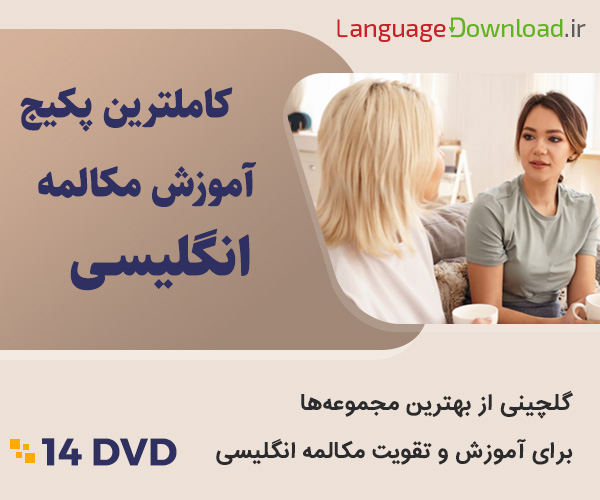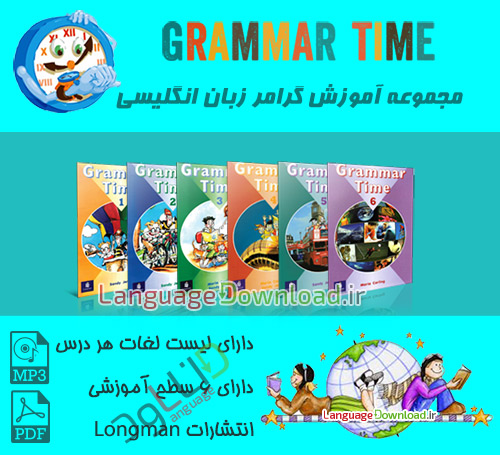یکی از مهارت هایی که همه زبان آموزان برای یادگیری آن عجله دارند، مکالمه و صحبت کردن است. در واقع، مکالمه یکی از رکن های اصلی یک زبان است. برای برقراری ارتباط در محیط کار، محیط تحصیل و … به آن نیاز دارید. پس باید مهارت مکالمه را یاد بگیرید و از آن در موقعیت های مختلف زندگی خود به راحتی استفاده کنید. در پست های مربوط به مکالمه هم قرار است که این مهارت مهم را به راحتی به شما آموزش دهیم و شما را با تمام بخش ها و مهارت های مربوط به آن آشنا بکنیم.
- بیشتر بخوانید : 12 تکنیک تقویت مکالمه انگلیسی | راهنمای کامل و ساده
همانطور که در دروس قبل متوجه شدید (دروس قبل را، می توانید در انتهای این پست ببینید)؛ این بخش، مکالمه انگلیسی را همراه با فایل صوتی مربوطه و تمام جزئیات آموزشی مربوط به آن را در اختیار شما قرار می دهد. این بخش، قسمت چهارم آموزش مکالمه است و موضوع آن “قومیت شما چیست؟” است. به مکالمه زیر توجه کنید:
پیشنهادهای ویژه

نرم افزار آموزش مکالمه انگلیسی با امکانات پیشرفته (اندروید)
با قابلیت تشخیص صدای کاربر، هایلایت مکالمه ها، تمرین و قابلیتهای فراوان دیگر

پکیج کامل آموزش مکالمه انگلیسی (14 دی وی دی)
بسته کامل از بهترین مجموعههای آموزش مکالمه
💬 ?What’s Your Ethnicity (قومیت شما چیست؟)

Vicky: Hi, Mike! What’s up?
ویکی: سلام، مایک! چه خبر؟
Mike: Not much. How are you doing, Vicky?
مایک: خبری نیست. تو حالت چطوره، ویکی؟
Vicky: Never been better. I’m waiting for my roommate.
ویکی: هرگز بهتر از این نبودم. منتظر هم اتاقی ام هستم.
Mike: Oh, do you mean Oksana? She is Ukrainian, right?
مایک: اوه، منظورت اوکسانا است؟ اون اوکراینی است، درسته؟
Vicky: Yup. Are you Italian-American Mike?
ویکی: آره. مایک تو ایتالیایی-آمریکایی هستی؟
Mike: I’m part Italian and part Irish.
مایک: من بخشی ایتالیایی و بخشی ایرلندی هستم.
Vicky: How interesting!
ویکی: چه جالب!
Mike: How about you Vicky? I know you’re Asian-American, but I don’t know which ethnicity.
مایک: در مورد تو چطور ویکی؟ می دانم که شما آسیایی-آمریکایی هستید، اما نمی دانم کدام قومیت هستید؟
Vicky: My parents are Korean, so I’m Korean-American.
ویکی: پدر و مادر من کره ای هستند، بنابراین من کره ای-آمریکایی هستم.
Mike: Cool! I love kimchi.
مایک: چه باحال! من عاشق کیمچی هستم.
Vicky: Um…okay.
ویکی: ام… باشه.
- بیشتر بخوانید : آموزش مکالمه زبان انگلیسی (هر آنچه لازم است بدانید!)
📚 لغات پرکاربرد انگلیسی مکالمه

🔸What’s up? (phrase) : What are you doing? / How are you?
Example: What’s up? – Not much.
چه خبر؟ (عبارت): چه کار می کنی؟ / چطور هستید؟
مثال: چه خبر؟ – خبری نیست.
🔸not much (phrase) : nothing special, nothing especially
Example: Not much has happened since you left.
خبری نیست (عبارت) : هیچ چیز خاصی، چیز خاصی نیست.
مثال: از زمانی که تو رفتی اتفاق خاصی نیفتاده است.
🔸Ukrainian (adjective) : a person or thing from Ukraine (an Eastern European country)
Example: I tried some delicious Ukrainian borscht at the international expo.
اوکراینی (صفت) : شخص یا چیزی از اوکراین (یک کشور اروپای شرقی)
مثال: من مقداری برش خوشمزه اوکراینی را در نمایشگاه بین المللی امتحان کردم.
🔸yup (exclamation) : yes (casual)
Example: Yup! I did it!
آره (حرف ندا) : بله (غیر رسمی و خودمانی)
مثال: آره! من انجام دادم!
🔸Italian-American (adjective) : an American person or thing with roots in Italy.
Example: Al Pacino is a famous Italian-American.
ایتالیایی-آمریکایی (صفت): یک شخص یا چیز آمریکایی که اصلیت ایتالیایی دارد.
مثال: آل پاچینو یک ایتالیایی-آمریکایی معروف است.
🔸Asian-American (adjective) : an American person or thing with roots in Asia.
Example: There are many Asian-American people living in Southern California.
آسیایی-آمریکایی (صفت): یک شخص یا چیز آمریکایی که اصلیت آسیایی دارد.
مثال: بسیاری از مردم آسیایی-آمریکایی در کالیفرنیای جنوبی زندگی می کنند.
🔸ethnicity (noun) : condition of belonging to a national or cultural group.
Example: My favorite ethnic food is Mexican.
قومیت (اسم): شرط تعلق به یک گروه ملی یا فرهنگی.
مثال: غذای قومی مورد علاقه من مکزیکی است.
🔸kimchi (noun) : a spicy, pickled side-dish served with Korean food.
Example: I love kimchi and rice with Korean barbecue.
کیمچی (اسم): یک نوع مخلفات تند و ترشی که با غذاهای کره ای سرو می شود.
مثال: من عاشق کیمچی و برنج با کباب کره ای هستم.
- بیشتر بخوانید : یادگیری صحبت کردن به زبان انگلیسی؛ همراه با معرفی منابع – بخش 1
- بیشتر بخوانید : 10 روش موثر در تقویت مهارت گفتار زبان انگلیسی – بخش 2
📑 Vocabulary Phrase Usage (استفاده از عبارت واژگانی)
In this lesson’s dialogue, Mike asks Vicky, “What’s up?” This is a common way for friends to begin a conversation. The meaning is the same as, “What are you doing?” or “What is happening now?” However, we often use it as an informal, simple greeting, such as “Hi.” You can answer the question by explaining what is new with you. However, the most common answer is “Not much.” “Not much,” simply means that there is no special news to report. Also, people often do not answer the question, “What’s up,” but instead respond with, “What’s up?”
The next word we will look at today is “ethnicity.” Ethnicity is the noun form of the word “ethnic,” as in “ethnic food.” Something that is ethnic is associated with a national or cultural group. For example, Italian food and Mexican food are considered ethnic foods by Americans. Ethnicity is the noun form, and we often use it to talk about a person’s race. A person may be from a different ethnicity than the country they were born or live in. In America, there are many ethnicities, so it is fairly common to ask people about their ethnic background. When you ask this question, you will hear many people say things such as, “I’m Italian-American” or “I’m Chinese-American.” But many people are from mixed backgrounds, so you will also hear things such as “I’m part Italian.” This means the person has some Italian in their background, but also has some other ethnicity or ethnicities.
در دیالوگ این درس، مایک از ویکی می پرسد: “چه خبر؟” این یک راه معمول برای دوستان، برای شروع مکالمه است. معنی همین (عبارات) است: «چه می کنی؟ یا “الان چه خبری داری؟” با این حال، ما اغلب از آن به عنوان یک احوالپرسی غیررسمی و ساده مانند «سلام» استفاده می کنیم. شما می توانید با توضیح آنچه در مورد شما جدید است به این سوال پاسخ دهید. با این حال، رایج ترین پاسخ این است که “خبر خاصی نیست”. “خبری نیست” به سادگی به این معنی است که هیچ خبر خاصی برای گزارش وجود ندارد. همچنین، مردم اغلب به این سؤال پاسخ نمیدهند «چه خبر است»، اما در عوض با «چه خبر» پاسخ میدهند.
کلمه بعدی که امروز به آن خواهیم پرداخت «قومیت» است. قومیت، شکل اسمی کلمه «قوم» است، مانند «غذای قومی». چیزی که قومی است با یک گروه ملی یا فرهنگی مرتبط است. به عنوان مثال، غذاهای ایتالیایی و غذاهای مکزیکی از نظر آمریکایی ها غذاهای قومی محسوب می شوند. قومیت شکل اسمی است و ما اغلب از آن برای صحبت در مورد نژاد افراد استفاده می کنیم. ممکن است یک فرد از قومیت متفاوتی نسبت به کشوری باشد که در آن متولد شده یا در آن زندگی میکند. در آمریکا، قومیتهای زیادی وجود دارد، بنابراین نسبتاً معمول است که از مردم در مورد پیشینه قومی آنها سؤال شود. وقتی این سوال را میپرسید، میشنوید که بسیاری از افراد جملاتی مانند “من ایتالیایی-آمریکایی هستم” یا “من چینی-آمریکایی هستم” می گویند. اما بسیاری از مردم از پیشینه های مختلط هستند، بنابراین شما همچنین چیزهایی مانند “من بخشی ایتالیایی هستم” را خواهید شنید. این بدان معنی است که فرد در پس زمینه خود کمی اصالت ایتالیایی دارد، اما قومیت دیگری دارد.
- بیشتر بخوانید : چگونه انگلیسی صحبت کنیم؟ (پادکست های آموزشی + رایگان)
✏️ Grammar Points (نکات گرامری)

The Focus of This Lesson is Subject-Verb Agreement with “Be”
“She is Ukrainian, right?”
“Be” is one of the most common and important words in the English language. In this lesson, we will look at how we use it as a copula and how we conjugate it. By copula, we mean that we use it to link the subject with an adjective, another noun, or an expression of place. You can think of “be” as being like an equal sign (=). The conjugation of “be” can be difficult, so let’s look carefully at how to do it using the simple present tense.
تمرکز این درس توافق فاعل – فعل با “Be” است.
“او اوکراینی است، درست است؟”
“Be” یکی از رایج ترین و مهم ترین کلمات در زبان انگلیسی است. در این درس به نحوه استفاده از آن به عنوان یک عضو رابط و نحوه ترکیب آن خواهیم پرداخت. منظور ما از copula این است که از آن برای پیوند فاعل با یک صفت، اسمی دیگر یا بیان مکان استفاده می کنیم. شما می توانید “be” را مانند یک علامت مساوی (=) در نظر بگیرید. صرف فعل “be” می تواند دشوار باشد، بنابراین بیایید با دقت به نحوه انجام آن با استفاده از زمان حال ساده نگاه کنیم.
Conjugation
The basic sentence pattern using “be” as a copula in the simple present tense is like this:
subject + “be” + adjective/noun/expression of place
The conjugation for “be” depends on whether the subject is in the first (e.g., “I”), second (e.g., “you”),or third person (e.g., “he”), and whether the subject is singular (only one person) or plural (more than one person). The conjugation also depends on the verb tense (for example, past, present, future, etc.).
But in this lesson, we will only consider the simple present tense.
صرف
الگوی جملات اصلی، با استفاده از “be” به عنوان یک عضو رابط در زمان حال ساده، به این صورت است:
فاعل + «be» + صفت/اسم/بیان مکان
صرف فعل «be» به این بستگی دارد که آیا فاعل در اول شخص (مثلاً «من»)، دوم شخص (مثلاً «تو»)، یا سوم شخص (مثلاً «او»)، و اینکه آیا فاعل مفرد است (فقط یک نفر) یا جمع (بیش از یک نفر). صرف به زمان فعل نیز بستگی دارد (مثلاً گذشته، حال، آینده و غیره).
اما در این درس فقط زمان حال ساده را در نظر می گیریم.
Examples
“She is Ukrainian.”
“You are tall.”
“او اوکراینی است.”
“تو قد بلندی.”
Person
Singular/Plural
“Conjugation”
“Example”
first
singular
“am”
“I am”
first
plural
“are”
“we are”
second
singular
“are”
“you are”
second
plural
“are”
“you (all) are”
third
singular
“is”
“he”/”she”/”it is”
third
plural
“are”
“they are”
- بیشتر بخوانید : 7 نکته برای صحبت کردن به زبان انگلیسی
🎧 متن گفتگوی فایل صوتی (Transcript)
Music Jesse here.
Daniel here. Beginner Series Season 1, Lesson 4.
What’s your ethnicity?
Hello and welcome to the Beginner Series Season 1 at EnglishClass101.com where we study modern English in a fun, educational format.
So brush up on the English that you started learning long ago or start learning today.
Thanks for being here with us for this lesson.
Jesse, what are we looking at in this lesson?
In this lesson, you will learn how to ask and talk about ethnicity.
This conversation takes place outside a classroom at a college.
The conversation is between Mike and Vicki, two classmates.
The speakers are friends.
Therefore, the speakers will be speaking casual English.
Now, before we listen to the conversation…
We want to ask…
Do you read the lesson notes while you listen?
We received an email about this study tip.
So we were wondering if you’ve tried it, and if so…
What do you think of it?
You can leave us feedback in the comment section of this lesson.
Okay, let’s listen to the conversation.
Hi Mike, what’s up?
Not much. How are you doing, Vicki?
Never been better. I’m waiting for my roommate.
Oh, do you mean Oxana? She is Ukrainian, right?
Yep. Are you Italian-American, Mike?
I’m part Italian and part Irish.
How interesting.
How about you, Vicki? I know you’re Asian-American…
But I don’t know which ethnicity.
My parents are Korean, so I’m Korean-American.
Cool. I love kimchi.
Um, okay.
And let’s hear it again one more time slowly.
Hi Mike, what’s up?
Not much. How are you doing, Vicki?
Never been better. I’m waiting for my roommate.
Oh, do you mean Oxana? She is Ukrainian, right?
Yep. Are you Italian-American, Mike?
I’m part Italian and part Irish.
How interesting.
How about you, Vicki? I know you’re Asian-American…
But I don’t know which ethnicity.
My parents are Korean, so I’m Korean-American.
Cool. I love kimchi.
Um, okay.
So, in this conversation, Mike and Vicki were talking about ethnicity.
That’s right.
So, by the way, Daniel, what ethnicity are you?
Well, I’m part Japanese, part English, part Irish, and part German.
Wow. You have a lot of mixes in there.
That’s right. How about you, Jesse? What’s your ethnicity?
Well, my mother is from Mexico, so I’m Mexican-American.
Okay. Great.
Are you good at cooking Mexican food?
I’m not, but my mother is, so she always cooked Mexican food for us.
I loved it.
Oh, I’d love to try it.
Yes, it’s really good.
So, let’s take a look at the vocabulary for this lesson.
The first one is…
What’s up?
What are you doing? How are you?
What’s up? What’s up?
And next?
Not much.
Nothing special. Nothing especially.
Not much. Not much.
Next we have…
Ukrainian.
A person or thing from Ukraine, an Eastern European country.
Ukrainian. Ukrainian.
And the next one?
Yes. Casual.
Yep. Yep.
Next we have…
Italian-American.
An American person or thing with roots in Italy.
Italian-American. Italian-American.
Next we have…
Asian-American.
An American person or thing with roots in Asia.
Asian-American. Asian-American.
And what’s the next one?
Ethnicity.
Condition of belonging to a national or cultural group.
Ethnicity. Ethnicity.
And the last one?
Kimchi.
A spicy pickled side dish served with Korean food.
Kimchi. Kimchi.
Okay, now let’s have a closer look at the usage for some of the words and phrases from this lesson.
In this lesson’s dialogue, Mike asks Vicki, what’s up?
This is a common way for close friends to begin a conversation.
The meaning is the same as, what are you doing or what is happening now?
However, it is often used as an informal, simple greeting, such as hi.
Yes, this phrase is very informal.
You can answer this question by explaining what is new with you.
But the most common answer is not much.
Not much simply means that there is no special news to report.
Also, people often don’t answer the question, what’s up?
But instead respond with, what’s up?
So let’s hear an example of this.
Okay, Jesse, what’s up?
What’s up?
Exactly.
The next word we will look at in this lesson is ethnicity.
Ethnicity is the noun form of the word ethnic as in ethnic food.
Something that is ethnic is associated with a national or cultural group.
For example, Italian food and Mexican food are considered ethnic food by Americans.
That’s right.
Ethnicity is the noun form and it is often used to talk about a person’s race.
A person may be a different ethnicity than the country they were born in or live in.
Now, in America, there are so many different ethnicities, so it is fairly common to ask people about their ethnic background.
When you ask this question, you will hear many people say things like, I’m Italian American or I’m Chinese American.
Yes, you hear those kind of phrases a lot, but many people are from mixed backgrounds, so you will also hear things like, I’m part Italian.
This means that the person has some Italian in their background but also has some other ethnicity or ethnicities.
Okay, let’s take a look at the grammar point for this lesson.
The focus of this lesson is subject verb agreement with B.
For example, she is Ukrainian, right?
B is one of the most common and important words in the English language.
In this lesson, we’ll look at how it is used as a copula and how it is conjugated.
By copula, we mean that it is used to link the subject with an adjective, another noun, or an expression of place.
You can think of B as being like an equal sign.
That’s right.
The conjugation of B can be difficult, so let’s look carefully at how to do it using the simple present tense.
The basic sentence pattern using B as a copula in the simple present tense is like this.
Subject plus B plus either an adjective, noun, or expression of place.
The conjugation for B depends on whether you are using first person, I, second person, you, or third person, he or she.
It also depends on whether there is only one person or more than one person.
The conjugation also depends on the verb tense, past, present, future, etc.
But in this lesson, we will only consider the simple present tense.
Let’s look at some examples.
First, an example in the first person.
I am American.
Next, an example in the second person.
You are tall.
And lastly, an example in the third person.
She is Ukrainian.
So don’t forget these three forms of the word B, am, are, and is.
There is a detailed write-up of the grammar point in the lesson PDF, so be sure to visit the website and download the PDF for this lesson.
Well, that just about does it for today.
Some of our listeners already know about the most powerful tool on EnglishClass101.com, the line-by-line audio, the perfect tool for rapidly improving your listening comprehension, by listening to lines of the conversation again and again.
Listen until every word and syllable becomes clear.
Basically, we break down the dialogue into comprehensible, bite-sized sentences.
You can try the line-by-line audio in the Premium Learning Center at EnglishClass101.com.
Well, until next time, see you later.
Bye, everyone.
Hi, Mike. What’s up?
Not much. How are you doing, Vicki?
Never been better. I’m waiting for my roommate.
Oh, do you mean Oxana? She is Ukrainian, right?
Yep. Are you Italian-American, Mike?
I’m part Italian and part Irish.
How interesting.
How about you, Vicki? I know you’re Asian-American, but I don’t know which ethnicity.
My parents are Korean, so I’m Korean-American.
Cool. I love kimchi.
Um, okay.
Thank you.
لیست درسهای مکالمات رایج انگلیسی
پیشنهادهای ویژه

نرم افزار آموزش مکالمه انگلیسی با امکانات پیشرفته (اندروید)
با قابلیت تشخیص صدای کاربر، هایلایت مکالمه ها، تمرین و قابلیتهای فراوان دیگر

پکیج کامل آموزش مکالمه انگلیسی (14 دی وی دی)
بسته کامل از بهترین مجموعههای آموزش مکالمه




